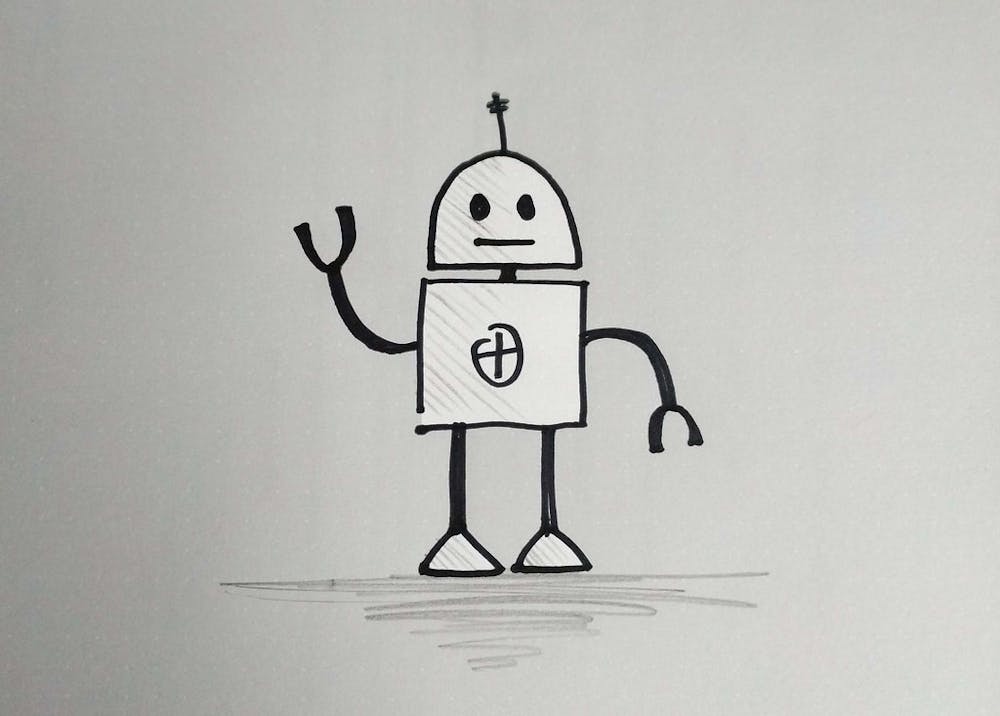As the pandemic enters its third year, 23% of the U.S. population remains unvaccinated, many haven’t received a booster, and vaccine misinformation continues to spread. To address these issues, researchers at the Bloomberg School of Public Health’s International Vaccine Access Center (IVAC) developed the Vaccine Information Resource Assistant (VIRA): a chatbot designed to give personal, confidential answers to over 150 questions.
IVAC Communications Lead Rose Weeks discussed the motivation behind the project in an interview with The News-Letter.
“We need multiple kinds of resources to support people in their decision-making process; there's not a one-size-fits-all solution for people,” she said. “We wanted to create a self-service tool to help people get trusted information on their own time using a highly tailored stream of information.”
Associate Professor of International Health Naor Bar-Zeev explained that in the same way doctors discuss personalized medicine, one of VIRA’s goals is to create personalized public health.
“Public health by definition speaks to the public issue, but we live in a culture where people want to be addressed in an individual way and express their personalized concerns,” he said. “[Chatbots] target public health at a personalized level; we’re getting an oxymoron, but it’s true.”
VIRA was developed in collaboration between Hopkins vaccine scientists and an Israeli research team at International Business Machines Corporation (IBM) that developed Project Debater, artificial intelligence designed to debate politics, philosophy and policy with human champions. João Sedoc, assistant professor of technology, operations and statistics at the New York University Stern School of Business and adjunct assistant professor at the Whiting School of Engineering, first connected IVAC to IBM in 2019.
“Chatbots had been developed in pilot settings prior to the pandemic to address weight management, depression and other issues that have a little bit more stigma attached to them,” Weeks said. “Users, particularly younger users, have found these tools to be very helpful, and the more they chat with these tools, the more likely they are to say that their concerns were addressed.”
Following its initial rollout in July 2021, VIRA has received over 10,000 users and upward of 40,000 messages. In January 2022, with Meta support, VIRA was added to WhatsApp, and IVAC received $100,000 worth of Facebook marketing credits to advertise in states with lower vaccination rates. Additionally, a Spanish version of the chatbot was introduced.
Weeks explains that VIRA’s greatest advantages are the chatbot’s confidential nature — essential given the stigma associated with being unvaccinated — and social listening abilities.
“Social listening is integral to vaccine information management. Understanding where the public is at when it comes to facts is really critical to make sure that communication being put by authorities or public health departments is speaking to people where they are and addressing concerns that they have,” she said. “We’ve been able to get a lot of useful information from that social listening on the back end.”
VIRA has been utilized by a variety of health programs including VALUE Baltimore, the Harford and Baltimore County health departments and Voices on Vax.
Weeks explained that health departments like the tool because of its ability to answer the top questions — a simultaneous strength and weakness, counter to Bar-Zeev’s ideal of personalized public health, as people can find the service impersonal.
“[VIRA] has answers to almost 200 different questions and has lots of different ways to say the same information, but people will ask, ‘I’m 57, I already got my three boosters; am I going to have a breakthrough case?’ The chatbot can't answer anything,” Weeks said. “The 80% of questions that are the same, [VIRA] can answer.”
Bar-Zeev argued that other obstacles in public response to VIRA are the United States’ partisan divide and the universal death of expertise.
“The U.S. has become increasingly partisan and unwilling to hear different views; this applies to all, not just anti-vaxxers. In a polarized and politicized environment, the ability to engage with an objective source of information has not been as well taken as it could have been,” he said. “The underlying technology was designed to achieve victory in a debate format. We very actively steered away from that approach because our aim is not to demonstrate that we're right or even to convince [users], just to inform them.”
As the COVID-19 pandemic evolves, IVAC will continue to update VIRA with the most recent information. Furthermore, it aims to expand VIRA to India and Zambia and broaden the topics addressed by the chatbot.
“We want [VIRA] to be a chatbot that answers questions about sexual reproductive health, about other vaccines like HPV [human papillomavirus] vaccines, questions related to postpartum care,” Weeks said. “There are a lot of stigmatized issues that come up, and there aren’t easy ways to get customized access to information.”
Weeks expressed hope that as chatbot technology advances, the tool will become an ever more prominent method of information dissemination and improve with each use.
“It’s an adaptive tool: The more people use it, share it with friends and family members, test it, argue with it and challenge it, the better it will get over time,” she said.





